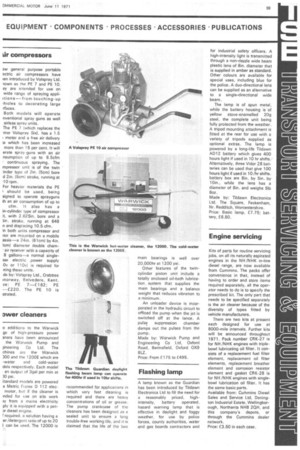Flashing lamp
Page 61

If you've noticed an error in this article please click here to report it so we can fix it.
A lamp known as the Guardian has been introduced by Tildawn Electronics Ltd to fill the need for a reasonably priced, highintensity, battery operated, hazard warning lamp that is effective in daylight and foggy weather, for use by police forces, county authorities, water and gas boards contractors and for industrial safety officers. A high-intensity light is transmitted through a non-dazzle wide beam plastic lens of 8in. diameter that is supplied in amber as standard. Other colours are available for special uses, including blue for the police. A duo-directional lens can be supplied as an alternative to a single-directional wide beam.
The lamp is of spun metal, while the battery housing is of yellow stove-enamelled 20g steel, the complete unit being fully protected from the weather. A tripod mounting attachment is fitted at the rear for use with a variety of tripods supplied as optional extras. The lamp is powered by a long-life Tildawn AD12 battery which gives 400 hours light if used in 10 hr shifts.' Alternatively, three Vidor 28 batteries can be used that give 100 hours light if used in 10 /hr shifts. battery box are Bin, by 5in. by 10in., while the lens has a diameter of 8in, and weighs 5Ib 8oz.
Made by: Tildawn Electronics Ltd, The Square, Feckenham, Nr. Redditch, Worcestershire. Price: Basic lamp, £7.75; battery, £6.50.


































































































































































